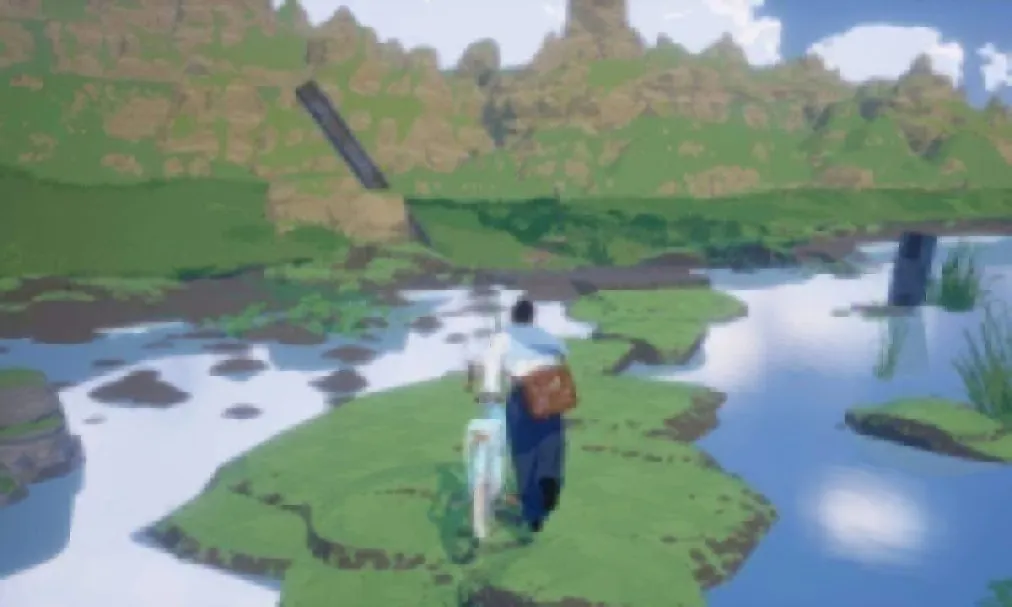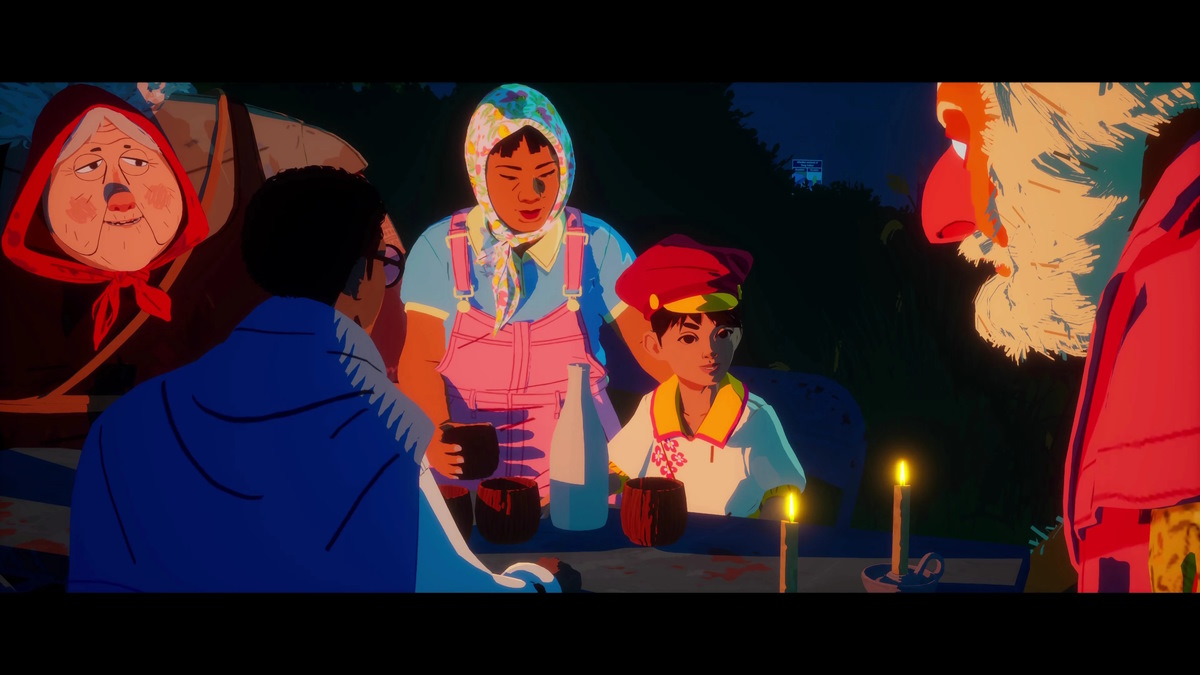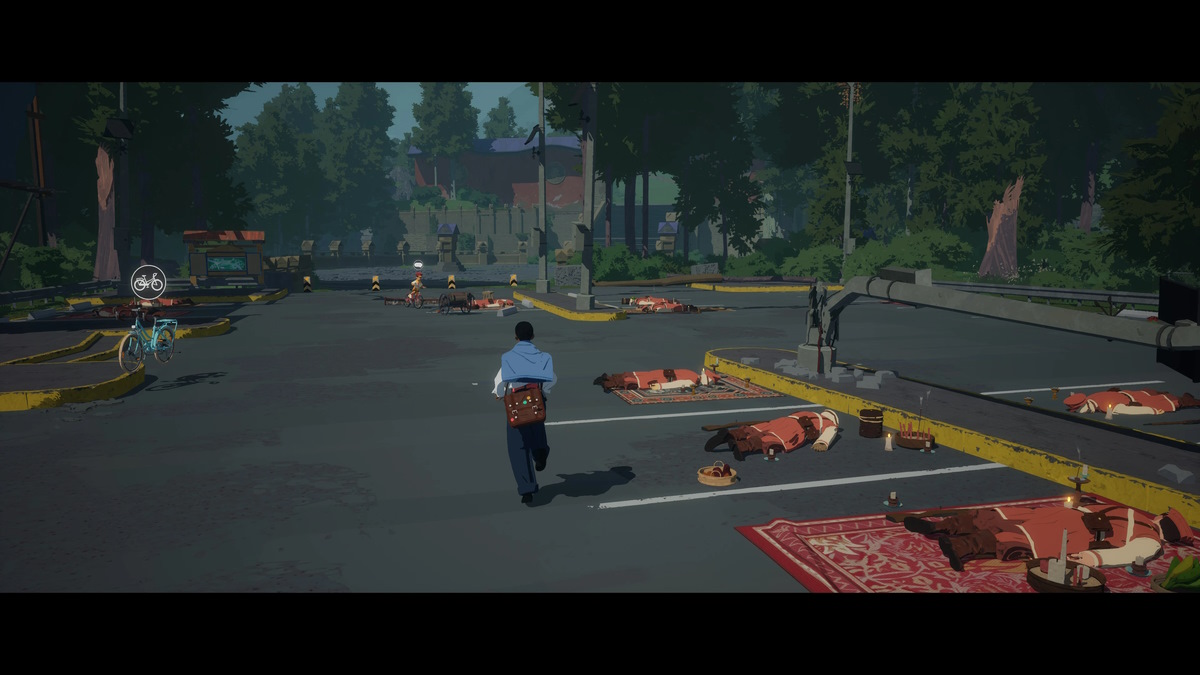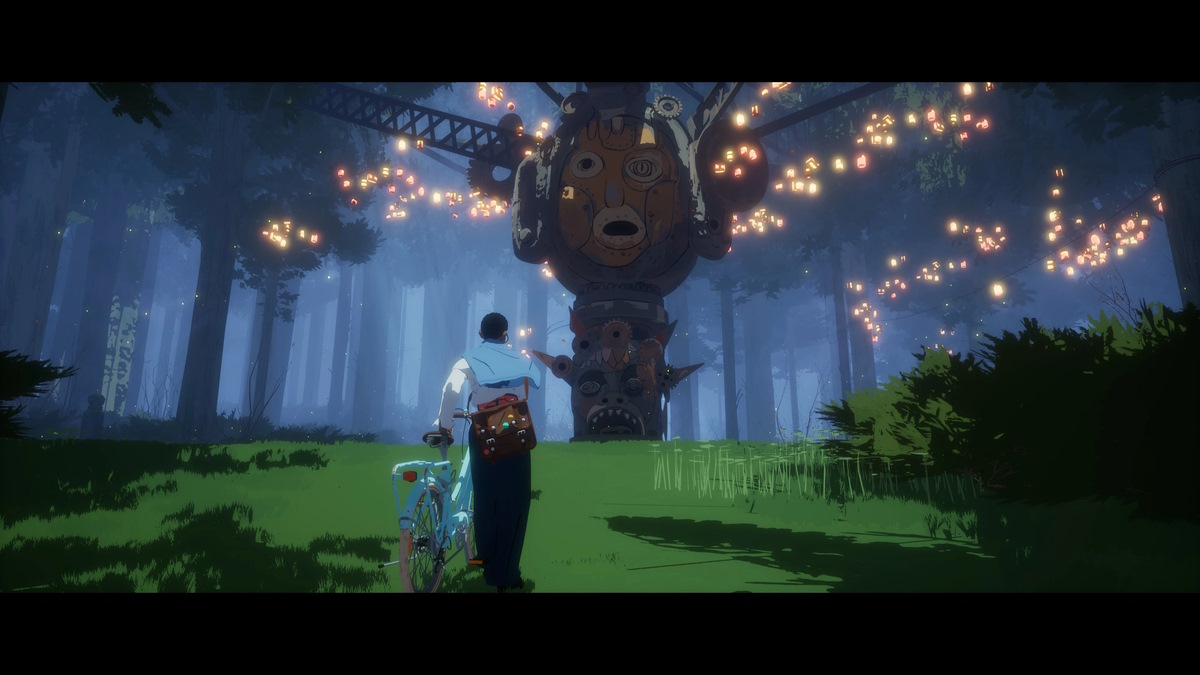Season: A Letter to the Future is a lot of things. It’s a game about introspection, appreciating where you come from, and deciding what to leave to future generations. But it’s also about scrapbooking. In fact, the scrapbook your character makes is their “letter to the future.” The game lasts from four to six hours to complete depending on how quickly you decide to go through. However, that time is meant to be taken in at a leisurely pace, not something where you run to the ending as quickly as possible. And I must say, it’s quite relaxing and enjoyable to play it the former way.
Season starts with the main character leaving their home. The setting is post-apocalyptic, and the protagonist Estelle lives with her mother in a small village. Her mother makes a pendant for her child by sacrificing memories. Its purpose? To protect her child from danger.
Soon afterward, Estelle sets out on a journey to document the world. Much of the lore in Season: A Letter to the Future is picked up via exploration and not spoon-fed. The main thing we know is that a strange sleeping illness put a great many people in comas and when the current “season” ends, things change.
The game is presented via a lovely cel-shaded world. You enter self-contained zones and can freely explore them until you decide to move on. The areas have a sense of place and are full of memorable things to interact with. There are also a few other people to talk to, willing to tell their stories (alongside voice acting). Most of this is of good quality, although not all of them are. The game’s performance was kind of all over the place for me on an RTX 3090, though, with a variable framerate and lots of huge drops, even at 1440p.
Working up to the big zone
The first hour or so of Season: A Letter to the Future is spent in smaller areas. You start in Estelle’s village and explore any locations you come upon as you move. After a bit, you’ll reach a large zone where most of the game takes place. It comes complete with a map and some optional objectives that require you to have explored certain areas in it beforehand. This area is big enough for this section to easily take a few hours or more depending on how much you want to do.
Estelle sets out with her bicycle, her journal, a recording device, and her camera. Navigation is either done on foot, which allows you to walk or run, or you can ride a bike. As you can’t run while you push the bike around, you’ll often have to park it someplace and come back to it when you’re done. Taking a picture or interacting with an object will add a scrapbooking page to your journal tied to that area section. Any instant pictures taken can be placed directly on the page.
But there’s a bit more variety to it than that. Certain objects will add inspirations that can be placed on the pages, including postcards or notes you’ve found, quotes that the protagonist scribbles down herself, or even drawings of the surroundings. You’ll occasionally find benches where you can sit and sketch, which will take up a couple of pages in the journal. At any time, you can flip through the book and see what you’ve put together from start to finish, which adds a lot of satisfying immersion to Season: A Letter to the Future.
Get on your bikes and ride
There are two kinds of scrapbooking sections. The first are general ones for the area sections themselves. You typically want to place at least five items per section, which fills up a meter that grants you new things to enter into the scrapbook. But some areas are directly tied to important lore, so you’ll be tasked with finding specific things to add to the book. For instance, the first of these is in the protagonist’s village and requires you to take pictures of three nearby murals, at which point you’ll need to drag the pictures you’ve taken to the correct spot.
I enjoyed this system, but some of the ones in the big zone could be a bit too vague for my tastes. There are a few of these lore pages that you can’t fill in without visiting a shrine first, meaning you’ll have to return once you’ve been to the shrine if you go out of order. You get a map of this area, but it’s not interactive, so it can be a bit more tedious to find your way. Plus, the lore page won’t tell if one of the things you need to take a picture of or interact with is in that area or a separate one, which can get frustrating.
Additionally, the movement in Season: A Letter to the Future can feel too light, as there’s not really any weight to the character. This can make moving around feel more awkward than it should. The bike controls also aren’t as responsive as they could have been. Perhaps it’s missing the mark to comment on movement in a narrative exploration game, but I think the overall game would have been even better to play with a bit more fine-tuning.
Seasons change
At the end of the game, you can make a choice that will change the ending a bit, but most will probably not want to do a second playthrough just for that. I finished the game at about five and a half hours of playtime. But I did probably wander for around 45 minutes to an hour while trying to find items on the lore pages, so I’d imagine most people who try to find everything will play for a similar length.
Season: A Letter to the Future has a huge amount of heart and offers a serene, bleak, and memorable experience. Its central scrapbooking mechanic is charming and its world is inviting, so it’s a trip that’s well worth embarking upon.











Published: Jan 26, 2023 10:03 am